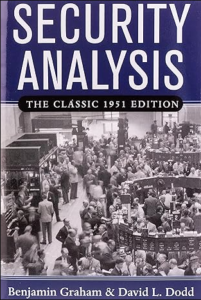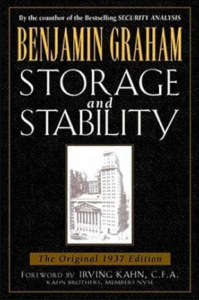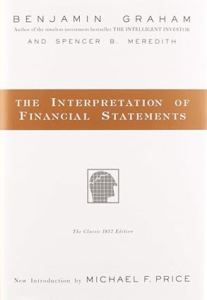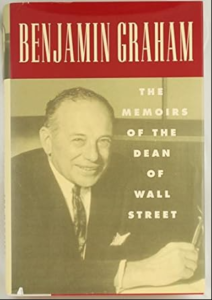No other collection of writing is more important for investors to read than the classic books written by Benjamin Graham.
Graham is considered the father of value investing and security analysis, and nearly everything written on the subject after his death is merely footnotes to Graham’s thinking. Miss these works, and you’ll find investing much more difficult.
So, which books should an investor focus on? We lay out the collection below, along with our recommendations for your study.
Table of Contents
Books Written by Benjamin Graham: 6 Pillars of Financial Brilliance
Most investors are not very prolific writers, so when you get the combination of a great investor who is also a great writer, you really have to sit up and take notice.
Benjamin Graham was one of those prolific writers, and the books that he wrote mostly focus on investing and economics. Remember that Ben Graham was considered a genius in a number of different fields – English, mathematics, economics, and investing. It’s the fact that he grew up poor that focused his attention on investing and why we know him today to be the godfather of security analysis.
But, throughout his career, he was still interested in economics and the classics, so he wrote extensively on those topics. He used to translate ancient Greek for fun. I guess it beats going to the pub.
So, here are the key works written by Ben Graham. I’ve focused this list around investing and economics, with an autobiography thrown in for fun.
The Intelligent Investor - Buffett’s Favourite Book Written by Ben Graham

The Intelligent Investor was the first of Graham’s books that I read. First published in 1949, it’s actually a series of books, as Graham kept updating them to be more relevant and reflect new thoughts and developments on investing.
The most notable updates to later books were provided by Graham himself, and later editions featured commentary by financial journalist Jason Zweig. This is the version that I read and I would recommend picking the latest up if you’re interested.
The book is widely regarded as a foundational text for investors, including legendary figures like Warren Buffett, who called it "by far the best book on investing ever written."
This is probably true. But, I can’t help but think that Security Analysis was a better series for serious investors because it provided a much more in-depth discussion of the detailed decisions that investors have to make with each and every investment.
Security Analysis - A Great Series of Books Written by Ben Graham & Various Coauthors

Security Analysis, written by Benjamin Graham and David Dodd, is Graham’s seminal work in the field of investing, first published in 1934. Often considered the bible of value investing, it provides a comprehensive framework for evaluating stocks and bonds to determine their intrinsic value and make informed investment decisions.
Its multiple editions (the 6th, published in 2008, includes modern commentary) keep it relevant, though it assumes some familiarity with finance. It’s less beginner-friendly than Graham’s "The Intelligent Investor," but it offers unmatched depth for understanding how to dissect a company’s worth. It’s a must-read for anyone serious about mastering investment analysis.
The book emerged from Graham and Dodd’s experiences during the Great Depression, emphasizing rigorous financial analysis over market speculation. Sometime in the 2000s, Buffett was quoted as saying that he preferred the early Graham, indicating that he really liked the earlier editions of security analysis and that he more closely aligns with this thinking today. Graham’s later thought shifted more towards factor investing.
I’ve read both the classic 1951 edition and the 7th edition multiple times – their margins are black with notes – and these are the two versions that I recommend picking up if you’re interested.
Storage and Stability: A Modern Ever-Normal Granary – Benjamin Graham’s Book on Currency Stability

Storage and Stability is not an investment book, but it is a great read on economics – specifically, trying to solve the problem of commodity price and economic volatility.
First published in 1937, it’s a unique departure from his famed investment books. Written during the Great Depression, Graham suggests a government-run system to store surplus commodities such as grain, cotton, or oil during periods of oversupply, then release them during periods of shortage. This "ever-normal granary" concept, inspired by ancient Chinese policy, aims to smooth price fluctuations, protect farmers and consumers, and reduce the severity of booms and busts.
Graham goes further, proposing that these commodity reserves could back currency, offering a more flexible alternative to the gold standard. He believed this would create a stable monetary base tied to tangible goods, fostering economic resilience. The plan reflects his analytical rigor, blending practical economics with a vision for systemic reform.
The Interpretation of Financial Statements – Benjamin Graham’s Must Read Book on Financial Statements

The Interpretation of Financial Statements, written by Benjamin Graham and Spencer B. Meredith and first published in 1937, is a concise guide to understanding financial reports.
I was initially hesitant about picking it up for many years, thinking that since accounting had changed so much since it was written, that it would be pretty useless today. I was wrong. The book is a great introduction to accounting statements and discusses how investors should think about various areas of a company’s financials. I think this is a great primer for anyone who is just getting into accounting and financial analysis.
Aimed at investors and lay readers, it demystifies the balance sheet, income statement, and other financial documents to help assess a company’s health. Graham emphasizes practical analysis, teaching readers how to interpret key metrics like assets, liabilities, earnings, and cash flow without getting lost in jargon.
The book breaks down complex accounting concepts into clear, actionable insights, focusing on what numbers reveal about a company’s stability and value. It’s less theoretical than Graham’s Security Analysis and more accessible than The Intelligent Investor, serving as a primer for beginners. Updated editions, like the 1998 version, retain its core lessons while addressing modern accounting standards.
While not as famous as Graham’s other works, it’s a timeless tool for anyone seeking to evaluate businesses through financial statements, embodying his value-investing philosophy in a compact format. Well worth picking up.
World Commodities and World Currency – An Economic Work Written by Ben Graham

I personally cannot vouch for either of Graham’s books on economics because I have not read them. Still, for anyone deeply interested in Graham, the history of economics, or economic ideas, these are probably great reads.
World Commodities and World Currency, published in 1944 by Benjamin Graham, expands on his earlier work, Storage and Stability, offering a global perspective on stabilizing commodity prices to foster economic expansion and postwar recovery. Graham, renowned for his value-investing philosophy, argues that commodity stabilization could achieve four key goals: foreign exchange stability, reasonable price stability, protective stockpiles, and a balanced increase in global production and consumption of goods.
His central proposal is a commodity-reserve currency system, where a basket of raw materials such as wheat, oil, or cotton backs an international currency, replacing or supplementing the gold standard. This, he suggests, would reduce economic volatility by linking money to tangible assets, smoothing out price fluctuations caused by supply and demand imbalances. Graham envisioned governments or international bodies managing these reserves, buying commodities when prices are low and selling when they’re high, thus preventing depressions and inflation.
Written in the context of World War II’s end, the book reflects Graham’s foresight into postwar economic challenges. Though never adopted, his ideas remain relevant amid modern discussions on currency stability and commodity markets. It’s a technical yet visionary work, showcasing his broader economic thought beyond stock analysis.
Benjamin Graham, The Memoirs of the Dean of Wall Street – An Autobiography Written by Ben Graham

This book is next on my reading list when it comes to books written by Benjamin Graham. I love autobiographies, but I put this one off after picking up The Einstein of Money, which was a great biography and covered much of Graham’s thoughts.
Benjamin Graham: The Memoirs of the Dean of Wall Street was published posthumously in 1996. Edited by Seymour Chatman, it offers a personal look at Graham’s life, from his early struggles in New York after his father’s death to his rise as a Wall Street icon.
Born in 1894, Graham details his academic brilliance at Columbia University, his career as an investor, and his development of foundational investment principles like intrinsic value and the margin of safety.
The memoir goes beyond finance, revealing Graham’s eclectic interests — poetry, languages, and even a stint as a playwright — alongside reflections on his personal life, including marriages and losses.
Read Next:








